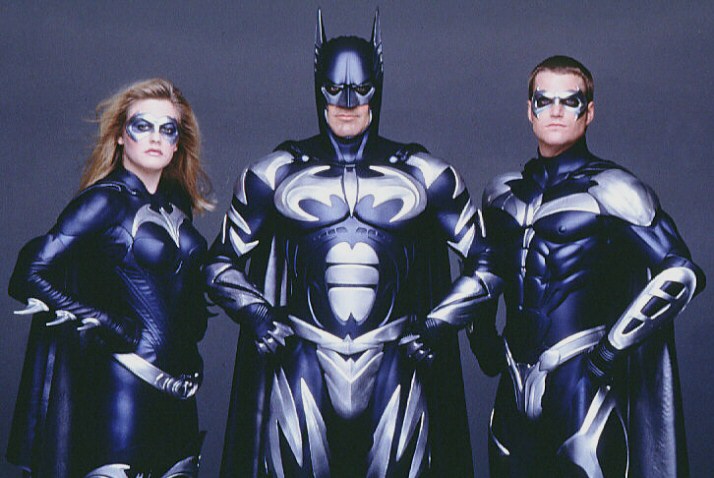
The journey to Hollywood stardom is often portrayed as an overnight sensation, but the reality for many of our favorite A-listers tells a different, far more intriguing story. Before they graced the top of the call sheet or commanded the big screen, many iconic actors honed their craft in what might seem like surprisingly small, blink-and-you’ll-miss-it roles. These aren’t just footnotes in their biographies; they are crucial, often pivotal moments where raw talent met opportunity, leaving audiences and industry insiders alike wondering, “Who *is* that?!”
It’s a testament to the power of a truly committed performance, proving that Konstantin Stanislavski’s famous expression, “There are no small parts, only small actors,” rings incredibly true. Whether it was a brief but electrifying cameo or a supporting character that outshone the leads, these actors seized their moment, infusing their characters with such creativity, skill, and undeniable passion that they fundamentally altered the trajectory of their careers. They weren’t just acting; they were making an impact that resonated long after their scenes ended.
Get ready to dive into the early, electrifying moments that launched some of Hollywood’s biggest names. We’re talking about those unforgettable performances in minor or secondary parts that became a one-way ticket to the A-list, often surprising everyone, including the established stars they shared the screen with. Prepare to be amazed by the sheer force of talent that made these actors impossible to ignore, transforming bit parts into breakout roles right before our very eyes!

1. **Brad Pitt in ‘Thelma & Louise’**It’s hard to imagine a time when Brad Pitt wasn’t a household name, but back in 1991, he was a fresh face who was about to set the screen ablaze. While he had done quite a bit of TV work prior, it was his role in “Thelma & Louise” that truly captured the collective consciousness. He played the seductive and slightly sketchy drifter, J.D., and his brief appearance was nothing short of a revelation.
The main characters, Thelma (Geena Davis) and Louise (Susan Sarandon), are on a journey to free themselves from societal chains, especially those placed by men in their lives. On the lam after a life-altering incident, Thelma encounters J.D., and their brief fling becomes a pivotal moment in her character’s arc. Pitt brought an undeniable, easygoing charm to J.D. that made Thelma’s immediate enchantment completely understandable, even for the audience.
Despite being on screen for only a few minutes, Pitt made a colossal impression. His chemistry with Geena Davis was undeniably hot, adding layers to a character who was both alluring and ultimately treacherous as he steals the women’s money. It was this magnetic presence that earned him the moniker “the next James Dean” from many at the time, a comparison that spoke volumes about his instant star power.
Co-star Susan Sarandon was among his biggest admirers, expressing her particular impression of “his sense of humor, because he really fleshed that part out in a way that wasn’t necessarily in the script.” This ability to elevate a role beyond the page is a hallmark of true talent. Once “Thelma & Louise” hit theaters, Pitt instantly became an in-demand actor, with a string of major films like “Cool World,” “Kalifornia,” and “A River Runs Through It” following in quick succession, officially launching his megastardom.
Read more about: 16 Iconic Movie Duos: Unforgettable Pairs That Stole Our Hearts
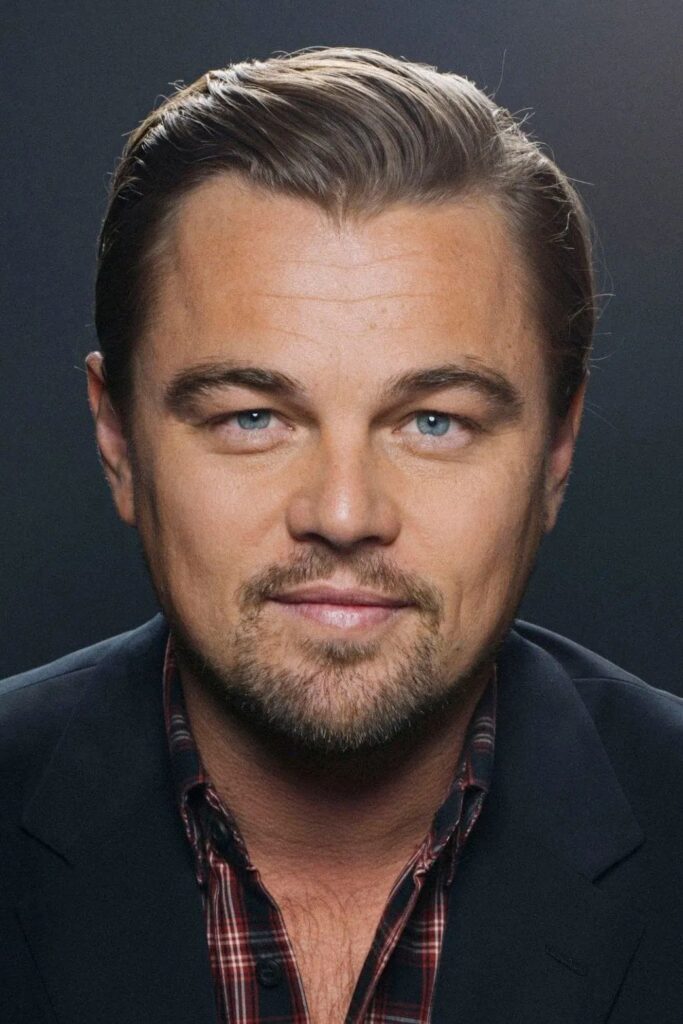
2. **Leonardo DiCaprio in ‘What’s Eating Gilbert Grape’**Before he was the Oscar-winning phenomenon starring in epics like “Titanic” or “Inception,” Leonardo DiCaprio was known, if at all, for a single season on the TV sitcom “Growing Pains.” However, that all changed when director Lasse Halstrom cast him opposite Johnny Depp in the poignant 1993 drama “What’s Eating Gilbert Grape.” His portrayal of Arnie, the intellectually disabled and perpetually troubled brother to Depp’s lead character, Gilbert, was nothing short of astonishing.
DiCaprio’s performance as Arnie was remarkable because he completely avoided condescension or falling into easy stereotypes. He immersed himself so deeply into the character that many viewers, unfamiliar with him, genuinely believed the role was being played by an actual person with special needs. This level of authenticity and commitment foreshadowed the profound and deeply nuanced performances that would define his future career.
Critics were absolutely captivated by his raw talent. David Ansen of Newsweek, a prominent voice among DiCaprio’s early champions, penned a glowing review, writing, “A lot of actors have taken flashy stabs at playing [handicapped] characters and no one, old or young, has ever done it better. He’s exasperatingly, heartbreakingly real.” Such high praise from a respected critic is rare for an actor so early in their career.
The Academy voters also took notice, bestowing upon DiCaprio his very first Oscar nomination for this supporting role. This early recognition firmly established his preternatural talent in Hollywood. Immediately following, he made the leap into leading roles, starring in “The Basketball Diaries” and “The Quick and the Dead,” laying the groundwork for his eventual reign as one of the most iconic and respected actors of his generation.
Read more about: Why 1993 Was One of the Best Movie Years Ever: 15 Films That Prove It
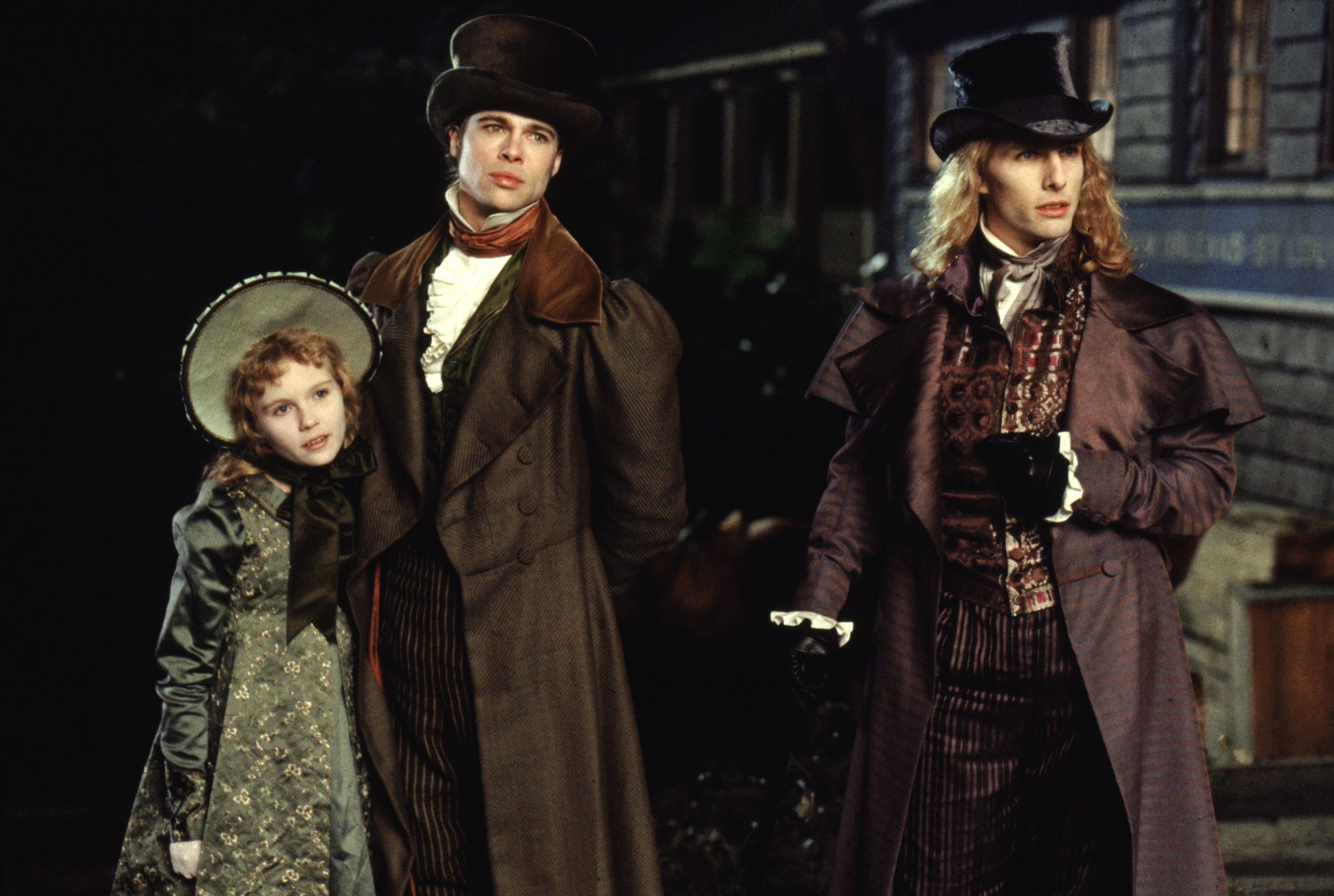
3. **Kirsten Dunst in ‘Interview with the Vampire’**Imagine being a mere 10 years old and holding your own on a major motion picture set alongside global superstars like Tom Cruise and Brad Pitt. That’s precisely the incredible feat Kirsten Dunst accomplished when she took on the role of Claudia in 1994’s “Interview with the Vampire.” Far from being overshadowed, she showcased a depth of talent and a maturity in her performance that is rarely seen in child actors.
Playing a child vampire presented a unique and profound challenge. It’s already difficult for a young actor to deliver a natural performance as a regular kid, but to embody the ancient soul trapped within a youthful body, with all the complexities and darkness that entails, is an entirely different level of artistic demand. Yet, Dunst not only succeeded but also managed to infuse the entire movie with a genuine, haunting soul.
The impact of her performance was undeniable; everyone, from critics to co-stars, took notice. Dunst earned a prestigious Golden Globe nomination for Best Supporting Actress, a remarkable achievement for such a young performer, especially when her heavyweight co-stars, Cruise and Pitt, received no nominations themselves for their roles in the same film. This speaks volumes about her standout presence.
Renowned film critic Roger Ebert, with his keen eye for true talent, encapsulated the essence of her work perfectly, stating that Dunst “is somehow able to convey the notion of great age inside apparent youth.” This ability to portray such an intricate duality resonated deeply with audiences and critics alike. Her impressive turn led to a stream of solid roles in “Little Women” and “Jumanji,” demonstrating her ability to avoid the common pitfalls of child stardom and transition seamlessly into a successful and critically acclaimed movie star.
Read more about: From Spider-Man to Oscar Nominee: The Best Kirsten Dunst Movies.

4. **Angelina Jolie in ‘Girl, Interrupted’**While Winona Ryder spearheaded the screen adaptation of Susanna Kaysen’s memoir, “Girl, Interrupted,” about her experiences in a mental institution, it was her co-star, Angelina Jolie, who utterly stole the spotlight and, in a dazzling turn, took home an Academy Award. Before this film, Jolie was primarily recognized as the daughter of actor Jon Voight, a lineage that often comes with its own set of expectations and pressures.
However, after “Girl, Interrupted” premiered, her famous last name became irrelevant; all eyes were firmly fixed on her extraordinary skill and magnetic presence. Jolie portrayed Lisa, a young woman diagnosed as a sociopath, a character who could effortlessly shift from charming to manipulative, and then to outright violent, all within the span of a single scene. This required immense range and psychological insight.
Jolie’s depiction of sociopathy was praised for its profound psychological accuracy, a difficult feat for even the most seasoned performers. What made her performance truly exceptional was her ability to convey this complex pathology without ever losing sight of the fact that Lisa was a deeply troubled soul, whose extreme behaviors were, to some extent, beyond her control. This nuanced portrayal added layers of empathy to a character who could easily have been a one-dimensional villain.
While Ryder was the nominal star of the film, it was Jolie who garnered the lion’s share of critical acclaim and industry accolades. Marc Savlov of The Austin Chronicle enthusiastically wrote, “Jolie’s explosive performance surpasses all expectations and renders the film a veritable must-see.” Her Oscar win cemented her status as a powerhouse performer, launching a thriving and incredibly successful career that has seen her become one of Hollywood’s most recognized and respected figures.
Read more about: From Cher to Ant-Man: What the Cast of Clueless Did Next

5. **Margot Robbie in ‘The Wolf of Wall Street’**Long before she brought the iconic Harley Quinn to life or earned multiple Oscar nominations, Margot Robbie was a well-known television actress in her native Australia. Her true global breakout, however, came with a dream gig: a plum role in a Martin Scorsese film. The legendary director personally selected her to play Naomi Lapaglia, the captivating mistress and later wife of the notoriously crooked stockbroker Jordan Belfort, portrayed by Leonardo DiCaprio, in “The Wolf of Wall Street.”
Naomi is depicted as a shrewd woman, acutely aware that she is, in essence, Jordan’s trophy wife. Yet, instead of being a passive figure, she deftly uses this status to her distinct advantage, navigating the opulent and morally bankrupt world of high finance with a sharp wit and a powerful presence. Many films might have reduced such a character to a mere caricature or a punchline, but Robbie imbued Naomi with unexpected depth and agency.
Film critic David Thomson of The New Republic notably remarked that the actress “makes a great deal of the trophy wife who turns into a bleak observer of truth.” It was this remarkable quality, combined with Naomi’s stinging sarcasm, fierce independence, and almost impossible sexiness, that Robbie made leap off the screen. She commanded attention in every frame, often drawing the eye away from her seasoned co-star, Leonardo DiCaprio.
Her ability to consistently steal scenes, even from a talent like DiCaprio and under the direction of a master like Scorsese, was a clear signal to Hollywood. Her performance demonstrated an exceptional skill at infusing characters with nuance and magnetic charisma. Subsequently, a cascade of major offers rolled in, including “Focus,” “Suicide Squad,” and the Oscar-nominated “I, Tonya,” solidifying her place as a bona fide A-list star.
Read more about: Jonah Hill’s Epic Hollywood Evolution: From Comedy King to Multi-Hyphenate Maverick, a Deep Dive into His Dramatic Transformation

6. **Matthew McConaughey in ‘Dazed and Confused’**Matthew McConaughey’s career didn’t just begin; it burst forth with an iconic, oft-repeated phrase: “Alright, alright, alright.” This instantly recognizable expression was first uttered by McConaughey in his very first motion picture, Richard Linklater’s 1993 coming-of-age comedy, “Dazed and Confused.” The film vividly captures a group of Texas adolescents reveling in the last night of school in 1976, embodying a nostalgic slice of Americana.
In the movie, McConaughey portrays David Wooderson, a character in his 20s who, somewhat suspiciously, still prefers to hang out with teenagers, clinging to the fading glory of his high school years. The actor masterfully crafted Wooderson as an unexpected blend of charming rogue and slightly pathetic figure, making him both endearing and a little cringeworthy. His laid-back, drawling delivery of dialogue became a signature element of the character and, indeed, of McConaughey’s early persona.
His lines, like when he casually tells a friend, “That’s what I love about these high school girls, man. I get older, they stay the same age,” were delivered with such natural comedic timing that they instantly became memorable and quoted by fans. The movie genuinely perks up with an added jolt of energy and humor whenever Wooderson appears on screen, underscoring his magnetic presence and the character’s unexpected relatability.
Audiences recognized this type of character – the guy who struggles to transition fully into adulthood – and McConaughey brought him to life with effortless cool. Entertainment Weekly’s Owen Gleiberman was quick to praise McConaughey in his review, highlighting how the actor perfectly played the “aging lothario whose oily come-ons (and hairstyle) are a priceless study in macho self-delusion.” This role, though minor, became his launchpad, paving the way for a career filled with diverse and impactful performances.
Read more about: Unveiled! The 12 Celebrity Scandals PR Teams Desperately Tried to Hide
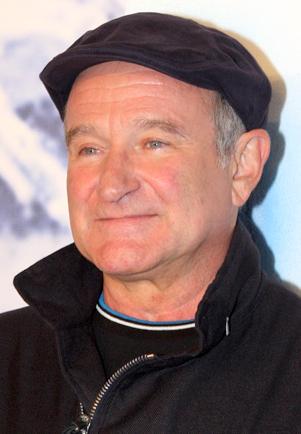
7. **Robin Williams in ‘Happy Days’ (as Mork)**It’s a truly heartwarming thought to remember the legendary Robin Williams, an actor beloved and deeply missed, who once had a surprisingly tiny part on the iconic 1970s-era TV series “Happy Days.” In just two episodes, Williams introduced the world to a goofy, eccentric alien named Mork from the planet Ork. This seemingly minor role was, in fact, the spark that ignited one of the most brilliant and impactful comedic careers in history.
Mork’s bizarre mannerisms, unique greetings like “Nanu Nanu,” and his utterly alien perspective on human customs were an instant hit with audiences. Williams’s improvisational genius and boundless energy were immediately apparent, even in such a limited capacity. He wasn’t just playing a character; he was an explosion of creativity and humor, making every moment he was on screen an unmissable event.
That tiny, two-episode appearance was more than enough to capture the attention of television executives and the public alike. The character of Mork resonated so strongly that it didn’t just make an impression; it directly landed Robin Williams the starring role on his very own sitcom, “Mork & Mindy.” This was a rare and spectacular feat, transforming a guest spot into a leading opportunity almost overnight.
“Mork & Mindy” went on to run for four successful seasons, propelling Robin Williams into bona fide comedic superstardom. His work on the show solidified his reputation as a master of improvisation and physical comedy, demonstrating a quick wit and an unparalleled ability to charm and entertain. It was the undeniable proof that a truly special performer can take the smallest part and turn it into a magnificent, career-defining win, setting the stage for a legacy that continues to inspire.
The dazzling allure of Hollywood often leads us to believe that stars are born fully formed, instantly gracing the silver screen with undeniable presence. But as we’ve already seen, the path to superstardom is frequently paved with stepping stones – those pivotal, often unexpected supporting roles that serve as undeniable showcases for raw talent. Now, let’s switch gears a bit and explore how the small screen, specifically popular television series, became the proving ground for a new crop of actors, laying the groundwork for their legendary careers and demonstrating that a compelling performance can truly happen anywhere.
These are the stories of actors who weren’t necessarily the lead in their early TV gigs but captured our imaginations so completely that casting directors, audiences, and even showrunners couldn’t help but take notice. From a high school jock in a family drama to a sleazy lawyer in a gritty crime saga, these performers infused their characters with such depth and magnetism that they transcended their initial scope, transforming minor parts into major wins and forever changing the trajectory of their careers. Get ready to discover how some of your favorite A-listers first made their indelible mark in the world of television.
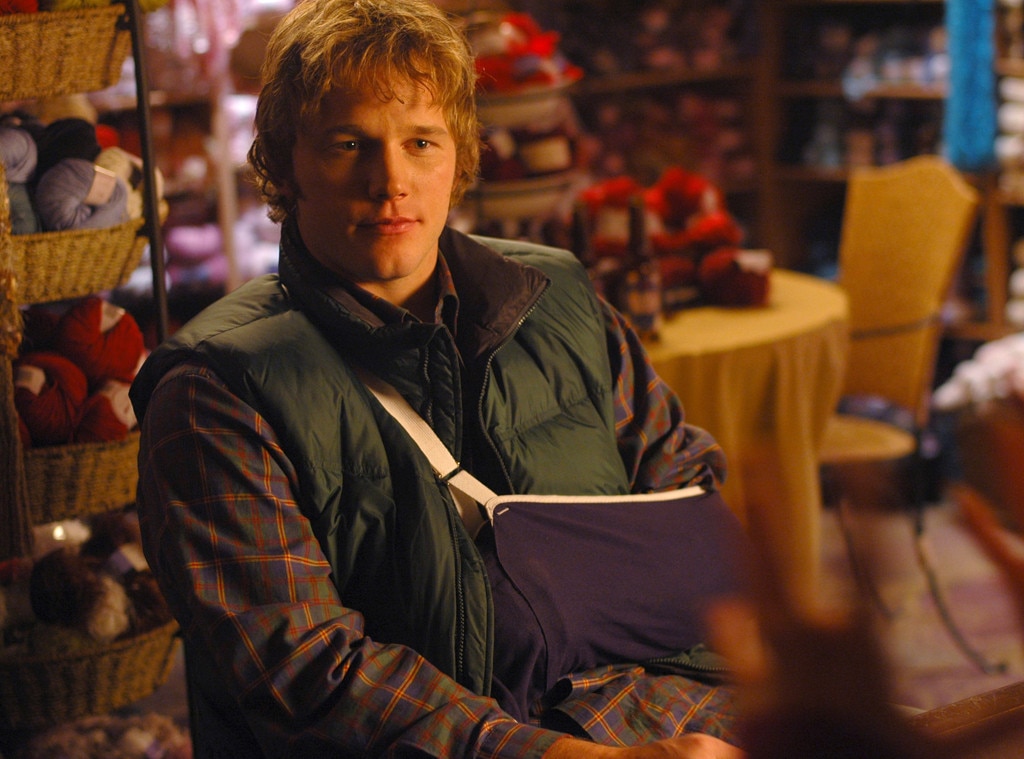
8. **Chris Pratt in ‘Everwood’**Before he was commanding starships in “Guardians of the Galaxy” or taking on dinosaurs in “Jurassic World,” Chris Pratt was winning over audiences in a slightly different, more grounded way. While his role as Andy Dwyer on “Parks and Recreation” is often cited as his major breakthrough, and rightly so for its pure comedic genius, an even earlier, significant supporting role truly began to put him on the map: Bright Abbott in the WB family drama “Everwood.”
Pratt starred as the high school joke, Bright Abbott, alongside future Marvel Cinematic Universe (MCU) star Emily VanCamp, who played his sister, Amy. His performance as the somewhat lovable, somewhat goofy jock showcased an early knack for charm and comedic timing, even within a more dramatic setting. It was a role that allowed him to hone his craft and connect with a burgeoning fan base who appreciated his easygoing, relatable energy.
Interestingly, even his “Parks and Recreation” role, which eventually solidified his status as a comedic powerhouse, wasn’t initially designed to be a main character. Pratt was originally signed to appear in just six episodes, a classic bit part scenario. However, his undeniable appeal and the audience’s immediate connection to Andy Dwyer were so strong that the show’s creators famously reworked their plans, keeping his character around and eventually making him a beloved, integral part of the ensemble.
This progression, from a notable supporting role in “Everwood” to an initially minor but rapidly expanded part in “Parks & Recreation,” perfectly illustrates how Pratt’s talent for making characters instantly likable and memorable allowed him to continually steal the spotlight. It’s a testament to his innate ability to infuse even the smallest roles with so much personality that they become indispensable, ultimately paving the way for his eventual ascension to leading man status in Hollywood blockbusters.

9. **Bob Odenkirk in ‘Breaking Bad’**For years, Bob Odenkirk was a respected figure in the comedy circuit, known for his sketch comedy work and sharp writing. He was a familiar face to comedy aficionados, but he hadn’t yet achieved mainstream stardom. That all changed when he nabbed the role of the incredibly sleazy, yet undeniably smooth-talking lawyer Saul Goodman on AMC’s groundbreaking series, “Breaking Bad.”
Saul Goodman entered the dark, morally complex world of Walter White and Jesse Pinkman as a seemingly minor character, a go-to guy for criminals needing legal loopholes and dubious advice. However, Odenkirk’s portrayal was nothing short of a masterclass. He injected the character with a cynical wit, an unexpected charm, and a theatrical flair that made every one of Saul’s scenes an absolute joy to watch, often providing much-needed comedic relief in an otherwise tense drama.
He wasn’t just good; he was so good that he consistently stole every scene he was in, effortlessly standing out alongside Bryan Cranston and Aaron Paul, who were already delivering career-defining performances. This standout work wasn’t just a win for the show; it was a career-defining moment for Odenkirk. His magnetic portrayal of the ethically flexible attorney resonated so deeply with audiences and critics that it sparked an unprecedented opportunity.
The character’s popularity and Odenkirk’s brilliant performance led directly to the creation of his own incredibly successful spin-off series, “Better Call Saul.” This rare feat transformed a supporting role into a leading one, further cementing his status as a recognizable and profoundly respected figure in Hollywood, proving that a truly captivating performance can spin off an entire universe of its own.

10. **Norman Reedus in ‘The Walking Dead’**Norman Reedus had already appeared in a couple of successful films before his tenure on “The Walking Dead,” but it wasn’t until he donned the leather vest and wielded a crossbow as Daryl Dixon that he became a genuine household name. In a show filled with complex characters and gut-wrenching drama, Daryl emerged as an unexpected fan favorite, a true testament to Reedus’s unique talent and the sheer power of character development.
What makes Daryl’s journey particularly remarkable is that the character was never even supposed to exist in the original comic book series from which the show was adapted. Reedus initially auditioned for a much smaller, different part, but his audition was so compelling and so uniquely Norman Reedus that the show’s production team was inspired to create an entirely new character, Daryl, specifically for him. Talk about turning a bit part into a breakout role!
As the rugged, taciturn, yet fiercely loyal survivor, Daryl Dixon quickly became an icon of the zombie apocalypse genre. Reedus imbued the character with a nuanced blend of vulnerability, resilience, and a surprising emotional depth, making him relatable even as he navigated a brutal, post-apocalyptic world. His performance proved that a character doesn’t need to be in the source material to become an indispensable and beloved part of a narrative.
His portrayal catapulted him to international fame, making him one of the most recognizable faces from “The Walking Dead” and a fixture at fan conventions worldwide. The creation of Daryl Dixon out of thin air, solely because of Reedus’s outstanding audition, stands as one of the most impressive examples of an actor seizing an opportunity and transforming it into a defining career moment, showcasing how talent can literally write its own part.
Read more about: The Real Drama: TV Co-Stars Who Couldn’t Stand Each Other Off-Screen

11. **Michael B. Jordan in ‘The Wire’**Before he was an Avenger-level threat as Killmonger in “Black Panther” or a boxing champion in the “Creed” franchise, Michael B. Jordan was building his acting cred in the intense, critically acclaimed world of HBO dramas. His earliest official acting debut was actually a one-episode stint on “The Sopranos,” but it was his more prominent and profoundly impactful role on “The Wire” in 2002 that truly made Hollywood insiders and audiences sit up and take notice.
Jordan appeared as Wallace, a young, vulnerable orphan caught in the brutal drug trade of West Baltimore. His character’s tragic story, depicted with raw authenticity and heart-wrenching realism, had a profound and lasting impact on the Emmy-nominated series, resonating far beyond his 13-episode stint. Wallace wasn’t just a minor character; he was a symbol of the devastating human cost of the drug war that “The Wire” so brilliantly explored.
His performance was a harrowing showcase of nascent talent, demonstrating an ability to convey deep emotion and innocence amidst an unforgiving environment. Even at a young age, Jordan brought a gravitas and vulnerability to Wallace that elevated the character beyond a simple plot device, making his fate one of the most memorable and heartbreaking moments in television history. He embodied the tragic reality of so many young lives affected by systemic issues.
As the context notes, Michael earned his acting cred early on when he appeared in just one season of the HBO drama “The Wire.” He made an excellent impression on Hollywood insiders and audiences alike, and the rest, as they say, is history. His powerful portrayal of Wallace set the stage for a career defined by compelling, layered performances, solidifying his path to becoming one of Hollywood’s most respected and in-demand actors.
Read more about: Get Ready to Cry: 15 Emotional Tearjerker Movies

12. **John Travolta in ‘Welcome Back, Kotter’**Long before his iconic, Academy Award-nominated role in 1977’s “Saturday Night Fever” transformed him into one of the biggest stars of his generation, John Travolta was better known by another name: Vinnie Barbarino. This character was a central figure on “Welcome Back, Kotter,” a hit sitcom that captured the antics of a remedial class at a Brooklyn high school, which aired in the mid-1970s.
Travolta’s portrayal of Vinnie Barbarino, the leader of the “Sweathogs” and a charismatic, slightly dim-witted heartthrob, was an instant sensation. He brought an undeniable charm, youthful energy, and a distinctive swagger to the role that made him incredibly popular with viewers. Vinnie’s signature catchphrase, “Up your nose with a rubber hose!”, became a cultural touchstone, cementing Travolta’s burgeoning star power.
Even though Gabe Kaplan was the star and co-creator of “Welcome Back, Kotter,” Travolta, as Vinnie, practically stole the show. His scenes were often highlights, demonstrating an innate ability to command attention and deliver comedic lines with pitch-perfect timing. It was clear, even then, that there’s a special spark about Travolta that went far beyond what was expected of a supporting character in a sitcom ensemble.
This role was a true launching pad, creating a legion of fans and making him a teen idol. His breakout on “Welcome Back, Kotter” proved that he possessed the charisma and talent to captivate a mass audience, directly leading to the opportunities that would see him become a global superstar in films like “Grease” and “Pulp Fiction,” and showcasing how a memorable TV character can turn into a one-way ticket to movie stardom.
Read more about: Beyond the Hype: 14 Celebrities Who Lost Their Shine And Are Seriously Due For A Reality Check
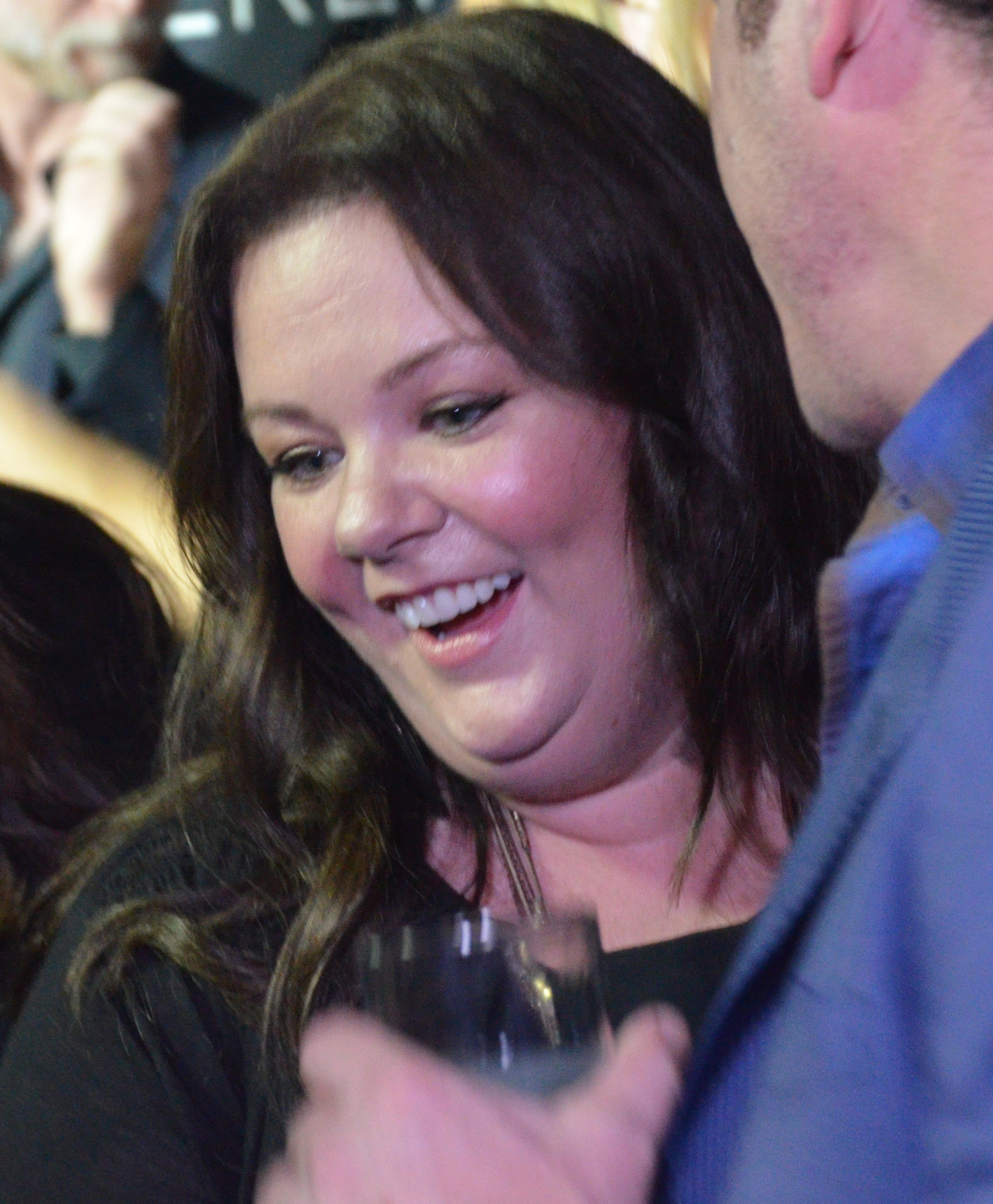
13. **Melissa McCarthy in ‘Gilmore Girls’**The beloved dramedy “Gilmore Girls” served as an unexpected launchpad for several A-listers, but few would skyrocket to fame quite like Melissa McCarthy. Before she was leading box office comedies or earning Oscar nominations, McCarthy was charming audiences as Sookie St. James, the clumsy, warm-hearted, and incredibly talented chef who was Lorelai Gilmore’s best friend and business partner.
Sookie was more than just a supporting character; she was the loyal, often hilarious anchor to Lorelai’s whirlwind life, providing both comedic relief and genuine emotional support. McCarthy imbued Sookie with such an endearing blend of culinary passion, scatterbrained charm, and unwavering friendship that she became a fan favorite, a testament to McCarthy’s ability to make any character feel incredibly real and deeply lovable.
Her consistent, standout performance on “Gilmore Girls” demonstrated her incredible comedic timing and dramatic chops, setting the stage for future triumphs. She later went on to win an Emmy for her leading role on the CBS sitcom “Mike & Molly” and, significantly, received an Academy Award nomination for her supporting role in the smash-hit comedy “Bridesmaids.”
That film, “Bridesmaids,” truly skyrocketed her to the A-list, establishing her as a trusted name in comedy and beyond. From her humble beginnings as a quirky, yet indispensable supporting character on “Gilmore Girls,” Melissa McCarthy proved that talent, dedication, and an infectious personality can turn a supporting role into a springboard for an incredibly successful and diverse career, solidifying her place as a Hollywood powerhouse.
Read more about: It’s No Act! These 10 Hilarious Celebs Are Just Like Their Funniest On-Screen Characters
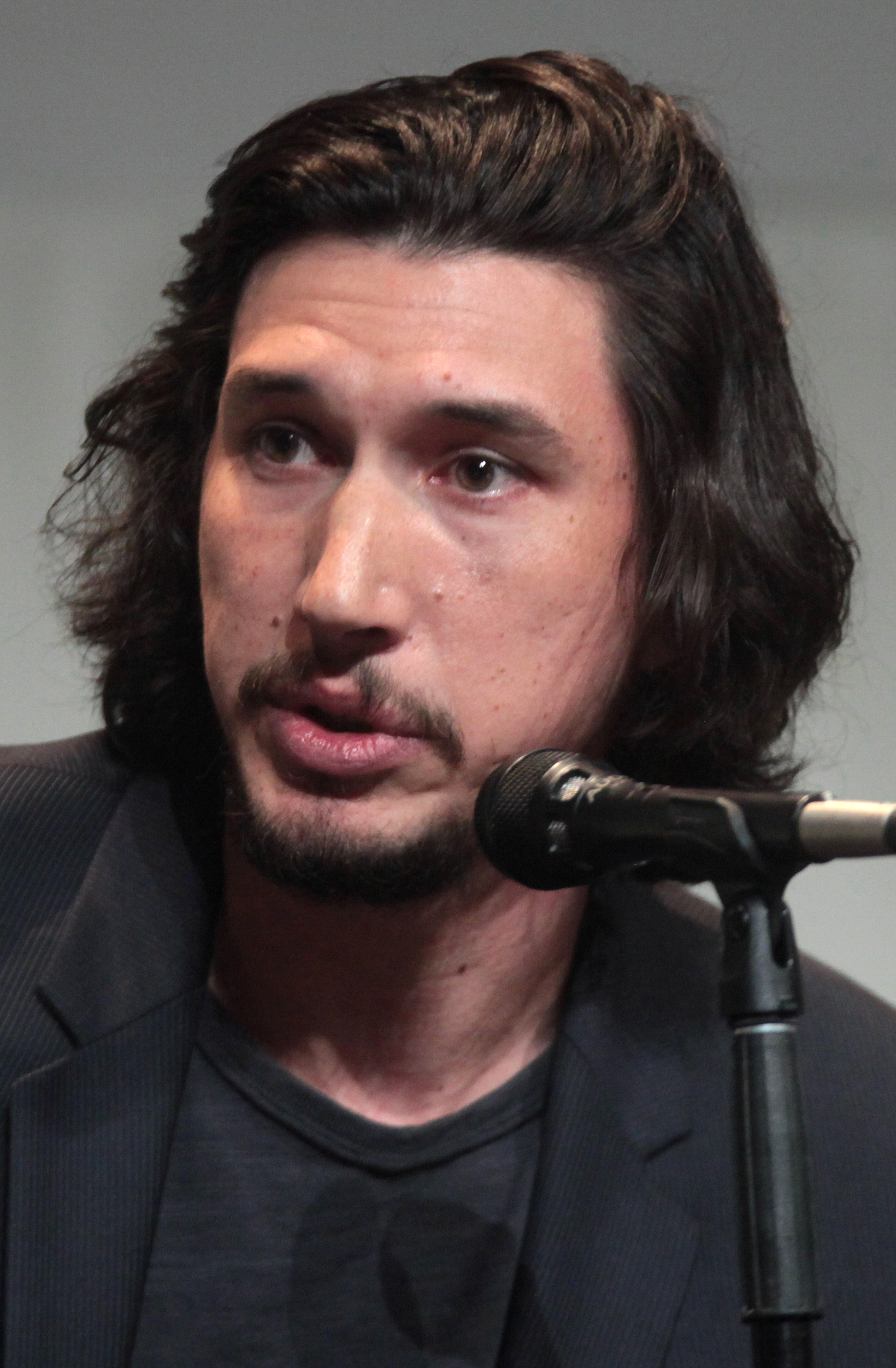
14. **Adam Driver in ‘Girls’**It’s almost hard to imagine a world without Adam Driver’s compelling, intense performances, but before he captivated audiences as Kylo Ren in the “Star Wars” movies or earned Oscar nominations for films like “BlacKkKlansman” and “Marriage Story,” he was making waves on the small screen. His scene-stealing role on HBO’s critically acclaimed series “Girls” as Adam Sackler was the catalyst that truly got Hollywood to take notice of his unique talent.
Driver played Adam Sackler, the volatile, artistic, and often perplexing boyfriend of Lena Dunham’s character, Hannah. His portrayal was a masterclass in complexity, presenting a character who could be both intensely charming and deeply frustrating, often within the same scene. He brought an unpredictable, raw energy to the show that was utterly magnetic, making his character one of the most talked-about elements of the series.
As a former Marine, Driver brought a distinctive intensity and physical presence to Adam that set him apart. His ability to navigate the character’s emotional landscape, from his eccentricities to his profound moments of vulnerability, showcased a remarkable range that belied his relative newness to the mainstream acting scene. Critics and viewers alike were drawn to his unconventional appeal and powerful performances.
His standout work on “Girls” proved that he was an actor of immense talent and versatility, capable of captivating audiences with a look or a single line. This pivotal television role directly opened the doors to major film opportunities, cementing his status as one of the most exciting and sought-after actors of his generation. It’s a prime example of how a memorable and impactful supporting role on a prestige TV series can be the definitive stepping stone to a sprawling and celebrated career.
And there you have it – another incredible collection of stories proving that the road to Hollywood stardom isn’t always a straight line, but often a winding path marked by unexpected turns and brilliant, scene-stealing performances in roles that were initially anything but leading. From the magnetic charm of Brad Pitt to the raw intensity of Adam Driver, these actors didn’t just play their parts; they owned them, expanded them, and turned them into unforgettable moments that launched them into the cinematic stratosphere. Their journeys remind us that true talent shines brightest, no matter how small the spotlight, and when it does, it’s impossible to look away. So next time you’re rewatching an old favorite, keep an eye out – you might just spot the next big thing, making magic in a moment you never expected.”
Read more about: You Won’t Believe These 13 Celebrities Are Working Regular Jobs Now
, “_words_section2”: “1966


